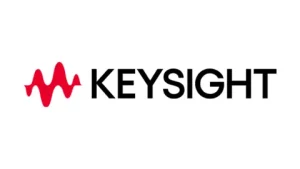
A couple of weeks ago, Ram Shallom and Onn Haran presented the status of V2X in Europe and China at Omniair’s monthly meeting. The recording can be found in the following link. Here is a short summary for those in a rush:
V2X is progressing in Europe toward mass-market deployment with DSRC as the de-facto technology:
- All market activities are based on DSRC: Spectrum allocation in Europe is technology-neutral. This is one of the key reasons for the failure of the Delegated Act. Different technologies have to share (co-exist) using the same channel. ETSI has been studying this, and the path to a working solution, allowing DSRC and C-V2X to share a channel is long and challenging, on the verge of impossible. DSRC technology deployments of the high-runner Volkswagen Golf MK8, and large-scale infrastructure in multiple European countries following the C-ROADS platform, cements the usage of DSRC. Planned vehicle and infrastructure deployments are only DSRC.
- The addition of V2X to the 2025 EuroNCAP roadmap will push V2X into all vehicles: The importance of EuroNCAP rating on new car purchases should not be underestimated. 97% of the new vehicles sold in Europe are EuroNCAP rated, and 89% of new vehicles have 4- or 5-star ratings. Any technology added to EuroNCAP has reached nearly all new vehicles within a few years after receiving the rating. It can be expected that the same outcome will be replicated for V2X. All OEMs will most likely include V2X in their vehicles to increase the EuroNCAP rating.
China is accelerating towards mass-deployment of C-V2X:
- Technology certainty coupled with clear government guidance: China’s national strategy calls for massive V2X coverage by 2025, with a spectrum allocated specifically to LTE-V2X. These together set the needed conditions for rapid local industry development towards accelerated commercialization. All of China’s leading carmakers have committed to deploy and are gearing up towards mass-rollout of C-V2X in 2022/2023, with a few launching a small-scale pilot production as early as 2020/2021. In addition, the ‘New Infrastructure’ campaign launched by the Chinese government to boost the local economy, promotes a substantial growth in V2X-enabled infrastructure across the nation.
- China Automotive indices promote V2X adoption: Like EuroNCAP, the value of V2X is recognizes by leading China Automotive indices, which either already include or plan to include C-V2X in their rating system within the next 2-3 years:
- C-NCAP (by CATARC) – China Automotive Safety Index
- i-VISTA (by CAERI) – China ADAS/AV Index
- C-IASI (by CIRI) – China Insurance Automotive Safety Index
In harmony with government strategy, these indices are acting as another local force motivating carmakers to massively adopt the technology and benefit from higher ratings which are a key part of car buyers’ decision criteria.
- The world’s largest interoperability plugfest: Another platform used by China’s industry to accelerate C-V2X commercialization, is the large-scale end-to-end cross-industry event held annually in Shanghai. All industry players, from chipmakers to carmakers gather every year to test the conformance, interoperability and performance of their solutions in a real-life setting. Number of participants, test scope and venue area, are growing each year to better simulate, further challenge and push the growing industry towards high-standard product commercialization.
In the future, V2X will expand the transmitted information to also include objects detected by vehicle sensors (called “sensor-sharing”). Sensor sharing enhances V2X’s value even at the early market stage by adding information about non-connected vehicles. For example, a vehicle planning to overpass a car in its lane, knows if vehicles, connected or non-connected, are driving in the opposite direction, by receiving this information from the vehicle that’s driving ahead of it (the same vehicle that it plans to overpass). To enable sensor-sharing, an additional communication channel is needed for increasing the capacity. The spectrum allocated in China and Europe includes the required bandwidth for future V2X needs. This extra channel is greatly important given the value of sensor sharing.
V2X will evolve from issuing warnings to controlling the vehicle. That transition is dramatic, calling for reliable and trusted V2X operation, impacting multiple aspects of system and chipset design.






